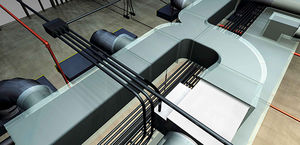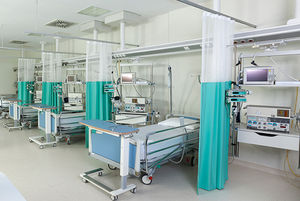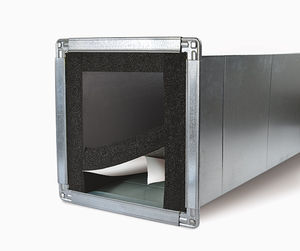
HVAC systems play a central role in supporting the comfort and safety of indoor environments. Insulation materials used in these systems can either help defend against or contribute to indoor air-quality problems. This is particularly true inside air-handling systems where the insulation needs to resist moisture while ensuring that the air passing over it remains mold, dust and fiber-free. The same requirements also apply to insulation used over hot and cold piping systems.
Insulation’s primary purpose is thermal efficiency, but the wrong product could particulate fibers or off-gas volatile organic compounds (VOCs) into the indoor air, creating poor indoor breathing conditions. Fibrous insulation materials can absorb moisture and condensation, supporting the growth of mold and mildew. Any of these problems will significantly degrade the indoor environment.
 Energy-Efficient Insulation that’s Fiber Free
Energy-Efficient Insulation that’s Fiber Free
Maintaining a fiber-free, particle-free air stream is an especially important clean-air strategy for healthcare facilities. In fact, the American Institute of Architects currently specifies that fibrous-glass duct liner not be used in certain healthcare HVAC systems. (Please check current standards and codes in your region.)
IAQ Considerations with Insulation
- Insulation should be non-particulating so it doesn’t become irritating for building occupants over the long term.
- Like many interior building products and finishes, insulation should be low-emitting, with low VOCs and negligible off-gassing.
- It should be easy to clean, especially if used as duct liner, and relatively dust-free and dirt-free.
- The material should resist moisture and control condensation.
- Insulation material should not provide food to support mold growth (like open cell materials, cellulose or even kraft paper barriers).
- Insulation should be non-particulating so it doesn’t become irritating for building occupants over the long term.
- Like many interior building products and finishes, insulation should be low-emitting, with low VOCs and negligible off-gassing.
- It should be easy to clean, especially if used as duct liner, and relatively dust-free and dirt-free.
- The material should resist moisture and control condensation.
- Insulation material should not provide food to support mold growth (like open cell materials, cellulose or even kraft paper barriers).
The Right Insulation for IAQ

An increasing number of hospitals, schools and universities seeking better IAQ look for replacing existing open cell insulation with closed cell elastomeric foam, not only for its mold-resistant properties, but also for its fiber-free, non-particulating construction. Only a closed-cell material like Armacell’s AP ArmaFlex elastomeric foam is specifically designed to prevent moisture from condensation, a problem in any cold-piping or air-handling system.
Armacell’s closed-cell elastomeric foam insulation products are fiber-free, non-particulating, and have low VOCs. They will not wick or absorb moisture. For added resistance to the growth of mold and mildew, the entire AP-branded product line is made with antimicrobial protection. In addition, the smooth surface of closed cell foam is easily cleanable, so the possibility of surface mold can be eliminated by cleaning. Most all of Armacell’s insulation products are GREENGUARD Gold Certified, the third-party standard designed to define low-emitting materials suitable for environments where people -- particularly children and sensitive adults -- spend extended periods of time.
